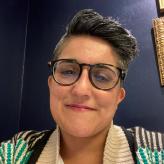Understanding intersectionality for diverse engagement
6 May 2022
Authors
-

Dr Shamaila Anwar is a member of the NHS Muslim Women’s Network, as well as a writer and a science communicator. She works with organisations and communities to tailor health messaging through an inclusive community focused approach, helping to empower people to make informed decisions about their health.
Being aware of, celebrating and embracing different backgrounds, heritages, cultures and experiences that your workforce come from, provides organisations with a strong foundation on which to build trust and develop a nuanced understanding of how to engage with different communities.
It is vital that organisations understand that if they want to engage communities they have seldom engaged with before, these communities need to be reflected in the workforce, but the workforce from these communities need to feel valued and empowered to represent the organisation.
What is intersectionality?
Intersectionality is a framework for conceptualising a person, group of people, or social problem as affected by a number of discriminations and disadvantages. It takes into account people’s overlapping identities and experiences in order to understand the complexity of prejudices they face.
In other words, intersectional theory asserts that people are often disadvantaged by multiple sources of oppression: their race, class, gender identity, disability, sexual orientation, religion, and other identity markers. Intersectionality recognises that identity markers (for example, ‘woman’ and ‘black’ do not exist independently of each other).One size does not fit all
I am a British Pakistani Muslim. I am a woman, I suffer from asthma and have a hidden disability. I am completely different to all other colleagues of colour. In fact, at times I would go so far as saying I don't even represent my own community. What I am trying to say is that we are all different. What engagement strategies work for me may not work for others.
Psychological safety
Creating psychological safety is in everyone’s interest and yet many of us don't understand what we mean by this. To foster a psychologically safe space and environment means you allow someone to be themselves and to authentically feedback any concerns or issues they may have, without fear of instigating a defensive response.
It is hard at first to not take things personally. But it is important, particularly in terms of workplace culture and when engaging with people from under-served groups, to ensure we listen, learn to accept feedback gracefully, acknowledge the errors and learn from them. If our colleagues feel valued and safe, this will project outwards and lay the foundations for developing trust with communities.What’s in a name?
I have lost count of the number of terms we have come up with over the years to describe communities we have failed to engage with. ‘Hard to reach’, ‘underrepresented’, ‘seldom heard’, ‘BAME’, ‘under-served’. I understand the sentiment is a helpful one. We feel if we can describe the issue we can resolve it, but are these terms actually helpful when we think about building real connections with real people?
By its very nature, inclusivity is highly intersectional, so by trying to identify a term that describes all communities, are we going against the very essence of what we are trying to achieve? For many communities, this may lead to further marginalisation and minoritisation if they don't fit into the definition.Try to be as specific as possible depending on the communities you are engaging with, if you are not sure, ask how they would like to be referred to.
Re-thinking your approach to engagement
Empowerment, feeling seen, heard and understood are at the heart of engaging with our diverse workforce and also communities. It’s crucial that we get this right as this will inform how we enter these spaces, sensitively and respectfully.
Engagement with diverse communities within our organisation needs to reflect how we aim to engage with these communities outside of it.
Tips
- Train your managers so they understand the importance of engaging with and understanding the diversity and intersectionality of their staff, their cultures and challenges they may be facing as an individual.
- Engage with your diverse workforce and communities and allow them to provide authentic responses and feedback.
- Familiarise yourself with history, including the contributions different cultures and communities have made to society, this leads to more open conversations based on an equal footing.
- Encourage people to ask questions, no one will be offended if you ask them about their culture, religion or heritage – what is offensive is often the assumptions that are made because people are too afraid to ask. Fear is not a reason to be misinformed.
- Ensure appropriate representation around the table.
- Open up the lines of communication and listen, consider how you respond, so you don’t reduce someone’s opinion or lived experience.
- Empower your diverse workforce and encourage them to establish support networks, recognise the importance of allyship and what that means.
Dr Shamaila Anwar is a member of the NHS Muslim Women’s Network, follow the network on Twitter @NHSMuslimWomen.
